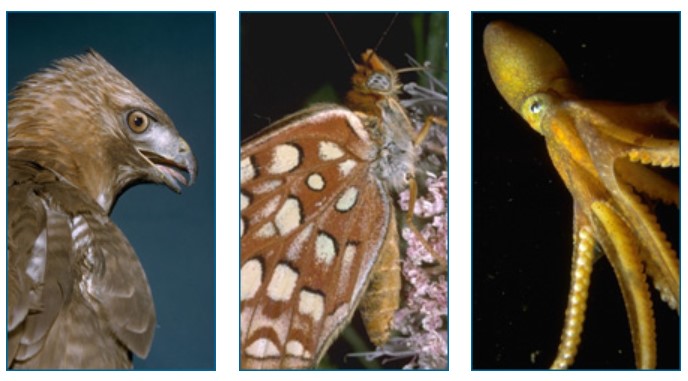by the Understanding Evolution team
Everywhere you look — even in the mirror — you see them staring back at you: eyes. All sorts of animals rely on their eyes for sensing their environments — from the hawk honing in on a field mouse far below, to a butterfly picking out its brightly colored mate, to an octopus jetting away from the predator it has just spotted. But why the eye? Eyes are clearly incredibly useful, but where did the eye come from? How did eyes evolve in so many animals and why do all these eyes look so different?

Here you will investigate how eyes evolved and why the eyes of different organisms are similar in some ways but not others. Specifically, you will see how the concept of homology — similarities inherited from a common ancestor — can crop up in surprising places, and how homologies illustrate both the diversity and unity of life.
In this case study we will explore these key questions:
- What is homology?
- How do we identify anatomical homologies?
- What do genes do? How do genes control other genes to build complex structures like eyes?
- How can genes be homologous?
